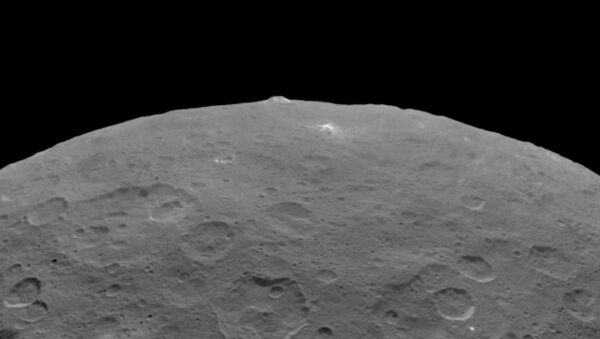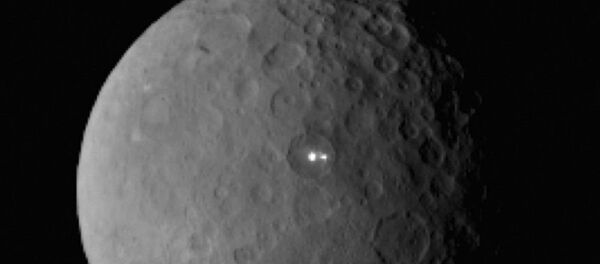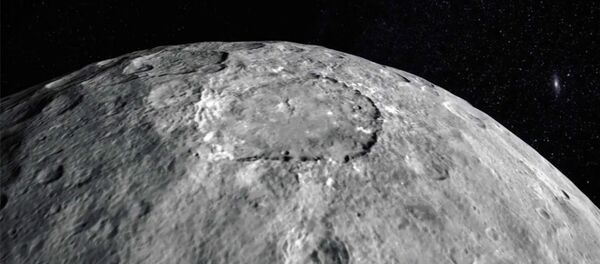— Curiosity Rover (@MarsCuriosity) June 22, 2015
Dawn first entered Ceres' orbit in March of this year and the latest images were snapped as the probe took its second orbit at a height of 2,700 miles (4,400 km). By December the probe will have descended to just 225 miles (360 km) above the surface.
But even at its current distance, the images are revealing surprising new features of the dwarf planet. In one image a mountain — which NASA says would be about the size of Mont Blanc, the highest peak in the alps — appears in an otherwise relatively flat landscape. Scientists have not yet offered an explanation for its formation.
Other images offer greater details of the bright spots that have been observed in various locations across Ceres' surface. So far, researchers have proposed that either ice or salt formations could explain these bright spots.
"It is exciting seeing these features come into sharper focus," Dr Marc Rayman, Dawn’s mission director and chief engineer, told the Daily Mail Online. "A few months ago, when Dawn began observing its new home from afar, we called it a bright spot. As the explorer closed in and provided better views, we realised it was two bright spots."
— NASA's Dawn Mission (@NASA_Dawn) June 22, 2015
Rayman said that there are several theories but that more data is still needed, and that the answer should be clear soon.
"My money is on the remnants from ice that has sublimated. The salts left behind then could be what’s reflecting the light."
A dwarf planet is defined as a body that orbits the sun, with a nearly circular path, and, most importantly, has not "cleared the neighborhood" of its orbital path. That is, a regular planet is large enough to dominate its path gravitationally and leave the area it travels through — the 'neighborhood' — clear of bodies of comparable size or bodies that aren't under its gravitational influence.
The Dawn spacecraft was launched in September 2007, to begin a 3-billion-kilometer journey through the inner solar system to study Ceres and Vesta, the two biggest bodies in the asteroid belt located between Mars and Jupiter.
Dawn entered the orbit of Vesta in July 2011, and spent a year exploring the asteroid, a rocky body discovered in 1807. Vesta is about the length of Arizona and appears to have a surface of frozen lava, thought to have flowed out of the asteroid's interior shortly after it formed around 4.5 billion years ago.






